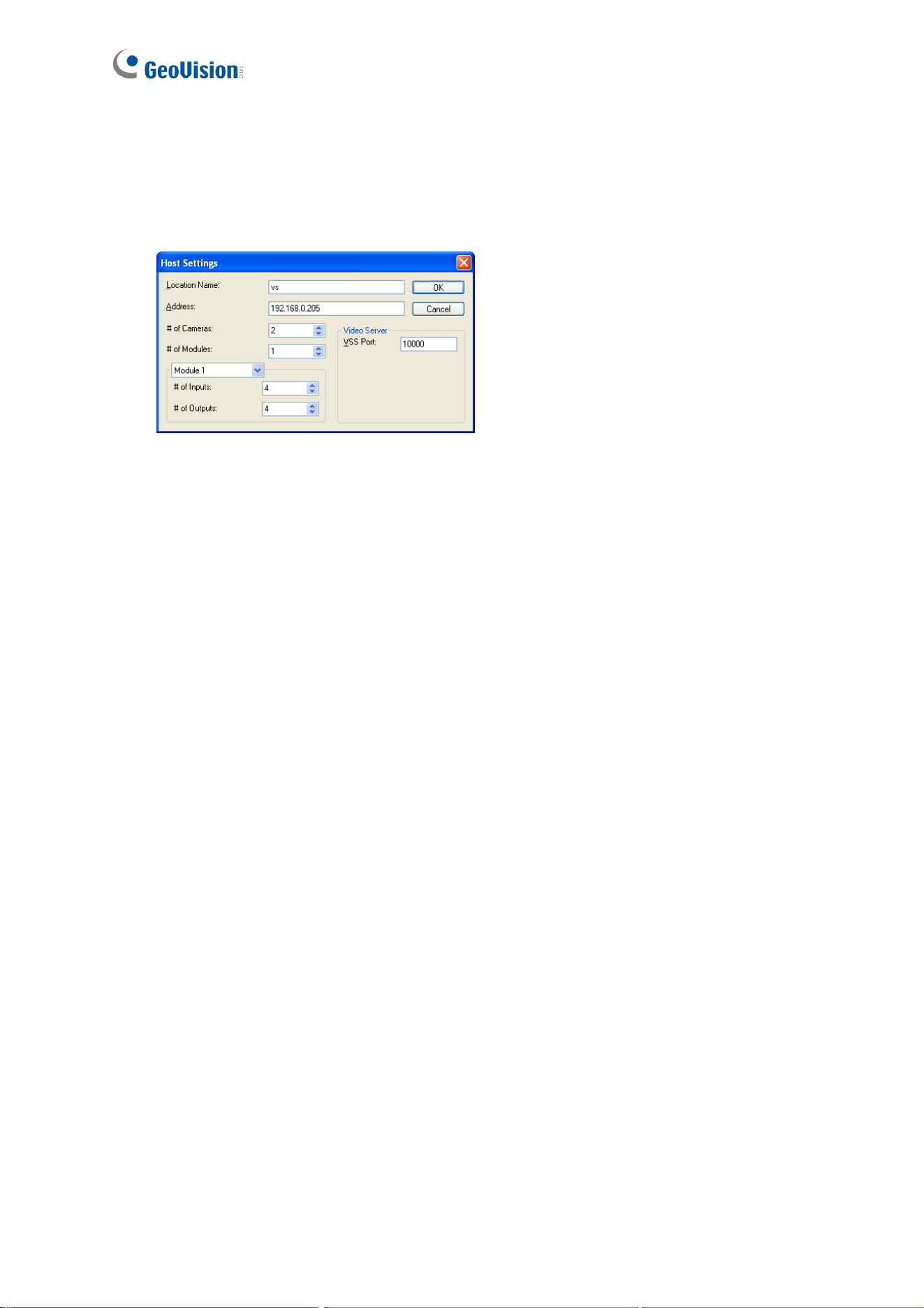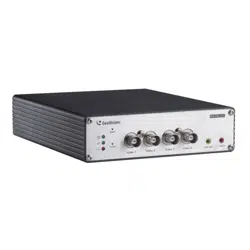Loading ...
Loading ...
Loading ...

154
4. To create a host, click the Add Host button on the toolbar and select Add Video
Server.
5. Right-click the created New Host in the Host View and select Host Settings. This
dialog box appears.
Figure 7-17
6. Give the GV-Video Server a location name, and type its IP address (or domain name).
Keep the default VSS port 10000, or modify it to match that of GV-Video Server.
7. Click OK to save the settings.
8. Expand the created host folder. Drag and drop the icons of cameras and I/O devices
onto the imported E-Map.
9. Close the E-Map Editor. Click Yes when you are prompted to save the file.
For details on creating an E-Map file on the E-Map Server, see “E-Map Application”, GV-
DVR User’s Manual or GV-VMS User’s Manual.
Connecting to GV-Video Server
Depending on where you save the created E-Map file (GV-DVR / NVR / VMS, E-Map
Server or Control Center), the steps to open the Remote E-Map window for monitoring
may vary slightly. The following is a connection example if you store the E-Map file in the
GV-DVR / NVR.
1. To enable the remote access to the GV-DVR / NVR / VMS, click the Network button,
select WebCam Server to display the Server Setup dialog box, and click OK to start
the WebCam server.
2. At the local computer, open the Web browser and type the address of the GV-DVR /
NVR / VMS. The Single View page appears.
3. Select Emap. The valid user name and password are required for login. For the first-
time user, you will be directed to the Download page. Install the E-Map program before
you can run it.
Loading ...
Loading ...
Loading ...
